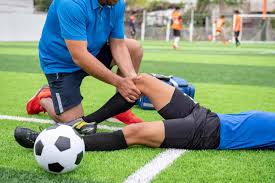Soccer’s Rising Popularity Brings an Increase in Injuries

As soccer continues to grow in popularity—especially among youth and college athletes—the number of injuries related to the sport is also on the rise.
“Soccer is excellent for developing strength, flexibility, and endurance,” says Dr. Hui Zhang, orthopedic surgeon at Aurora Health Care. “However, it’s important to be aware of common injuries, especially to the lower body.”
“Beat the Pressure: A Comprehensive Guide to Lowering Blood Pressure Naturally.”
🚨 Common Soccer Injuries
The sport’s frequent running, kicking, and quick changes in direction make the legs and feet especially vulnerable. Here are the most common injuries and their typical treatments:
- Low Ankle Sprains: These involve ligaments connecting the fibula to the foot. They are typically treated without surgery, using physical therapy to speed recovery and reduce the risk of recurrence.
- High Ankle Sprains: These affect the ligaments connecting the fibula and tibia. Non-surgical treatment is common, but severe cases may require surgery.
- Ankle Fractures: A break in the ankle bones can need surgical repair to restore stability and prevent long-term damage like arthritis.
- Knee Injuries: ACL tears and meniscus injuries are frequent due to pivoting movements. These often require surgery to restore knee function.
- Achilles Tendon Ruptures: More common in weekend athletes, this injury typically needs surgery to preserve strength and support full recovery.
🛡️ Preventing Soccer Injuries
To lower the risk of injury:
- Avoid early sport specialization.
Dr. Zhang recommends that kids play multiple sports to develop balanced physical skills and reduce overuse injuries. - Stay flexible and strong.
A regular stretching and strength-training routine is key. - Eat well.
A balanced, nutritious diet supports growing bodies and recovery.
🏥 When to Seek Medical Attention
- Go to the emergency room if:
- You can’t put weight on the injury
- There’s a visible deformity
- There is a deep cut or open wound
- Visit urgent care if:
- The injury is swollen and painful
- You can still bear some weight
- There is no obvious deformity
Soccer is a rewarding sport, but it’s crucial to stay informed, prepared, and cautious to prevent and manage injuries effectively.
💔 “She said she loved me. And for fifty-two years, I believed her.” 💔
Buy The Book "The Longest Lie: A Husband’s Journey Through Love, Betrayal, and Redemption" From Gumroad






